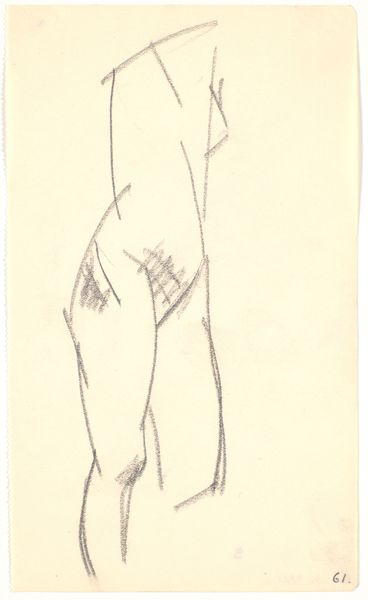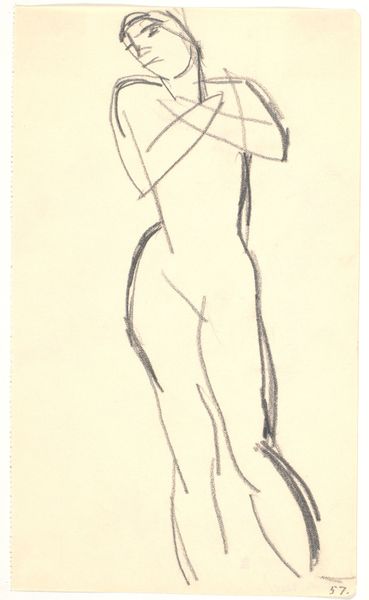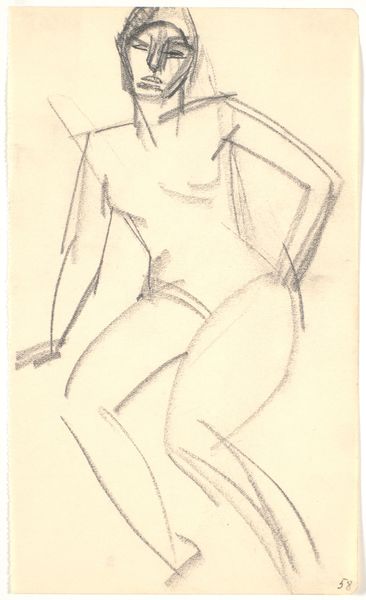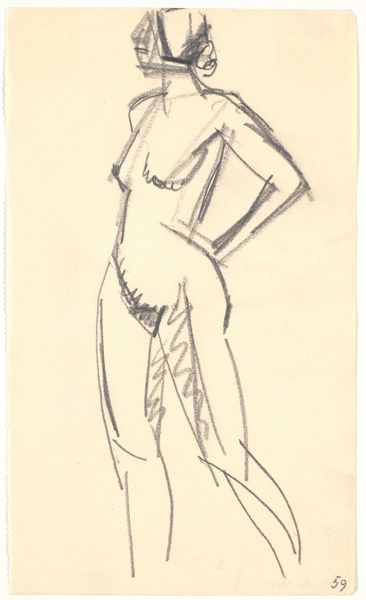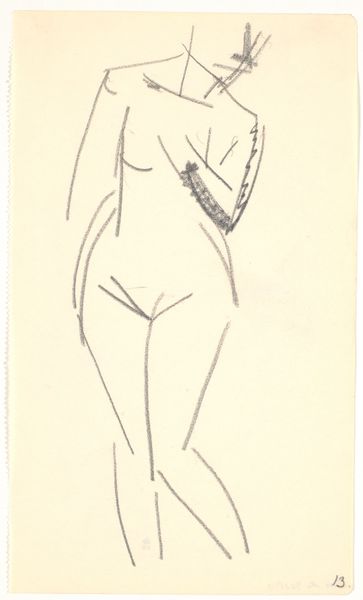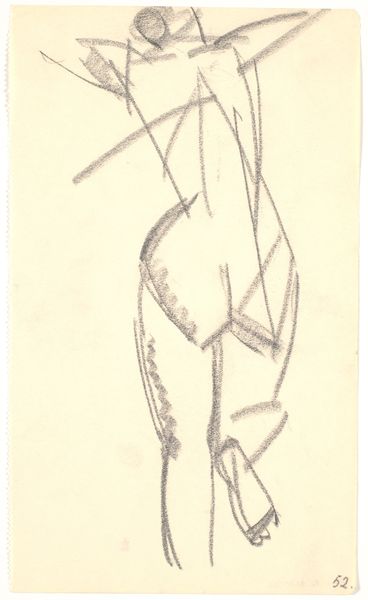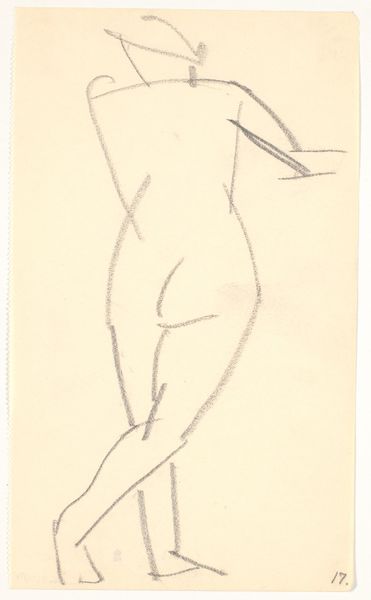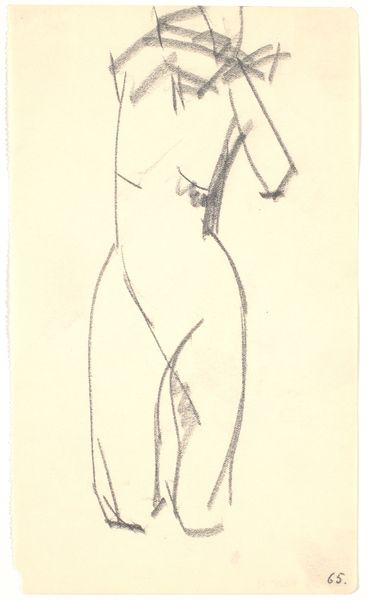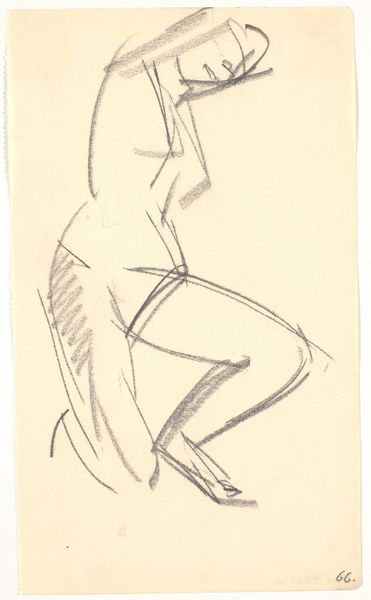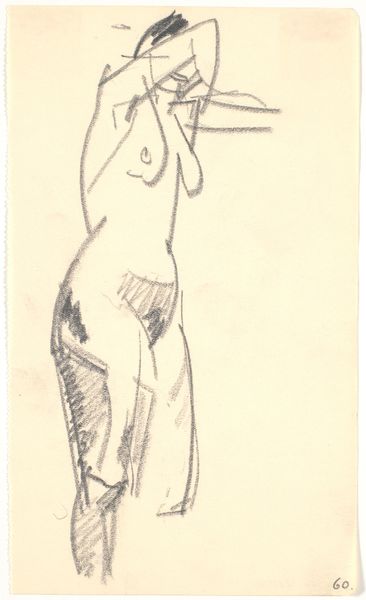
drawing, pencil
#
portrait
#
drawing
#
figuration
#
pencil
#
expressionism
Dimensions: 209 mm (height) x 124 mm (width) (bladmaal)
Editor: Here we have "Stående model", or "Standing Model", a pencil drawing by Karl Isakson, created between 1914 and 1915. The lines are so minimal, yet they manage to convey such a clear sense of a figure turned away from us. What social or artistic currents might have influenced this pared-down, expressive style? Curator: Given the timeframe and the expressionistic style, it’s essential to consider the socio-political context of early 20th-century Europe. Isakson, like many artists of the era, was likely responding to a world undergoing rapid change and increasing social tensions, pre-dating the first world war. How do you see the drawing itself reflecting, or perhaps rejecting, traditional academic figure drawing? Editor: Well, there's an obvious break from the idealized and highly finished figures typically seen in academic art. The sketch feels almost like a fleeting impression, a capture of raw emotion rather than precise anatomy. Curator: Exactly. This rejection can be read as a form of social commentary. The "Standing Model" becomes less about portraying beauty and more about conveying a psychological state. Considering the Expressionist movement, do you think it was more accessible or elitist for the public to view at the time of its release? Editor: I can see how the average museum visitor at the time might find its style shocking or unsettling compared to conventional portraiture. That leads me to wonder, how did the cultural gatekeepers of the day, the established art institutions, respond to this shift toward such expressive figuration? Curator: Institutions were indeed divided. Some embraced these new forms, seeing them as a vital reflection of modernity. Others clung to more conservative ideals. But, artworks such as Isakson's played a vital role in shaping public perception. It expanded the visual language that was acceptable, or even expected, within the realm of art. Editor: I see now, this isn't just a drawing of a model; it’s a statement about the changing role of art itself within a changing society. I definitely understand and appreciate this piece much more than I did just a few minutes ago. Curator: Agreed. Thinking about the public role of art invites us to see this simple drawing as participating in a broader conversation about representation and social change.
Comments
No comments
Be the first to comment and join the conversation on the ultimate creative platform.
